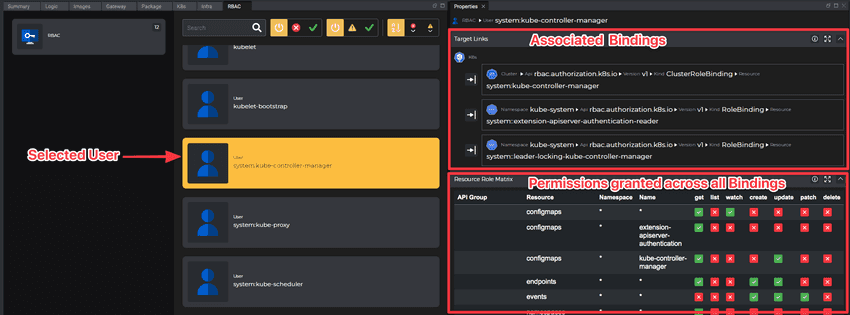RBAC View
Let’s run a thought experiment. You’ve created the certificate for the user using OpenSSL, created kube-config file, granted permissions to a user(or a group) using Roles and Bindings. You did this about 100 times. Fast forward three weeks. How long would it take to answer a simple question: “How many users and groups do we have, and what permissions do they have? “. Using traditional tools that would mean going over every single Binding and Role. That’s why we created a dedicated RBAC view in Kubevious.
Kubevious RBAC view identifies which Users and Groups are used in the cluster.

Selecting a User exposes all Bindings used to grant Roles to the User and presents the correlated role matrix view for the selected User. The role matrix combines permissions for all bound Roles and ClusterRoles. API Resources are added as rows and permission verbs as columns. The same applies to any Group.

Kubevious also identifies permissions granted to Applications using ServiceAccounts. To learn more, visit Correlated RBAC.
Hierarchy Structure
- RBAC
- User
- Group